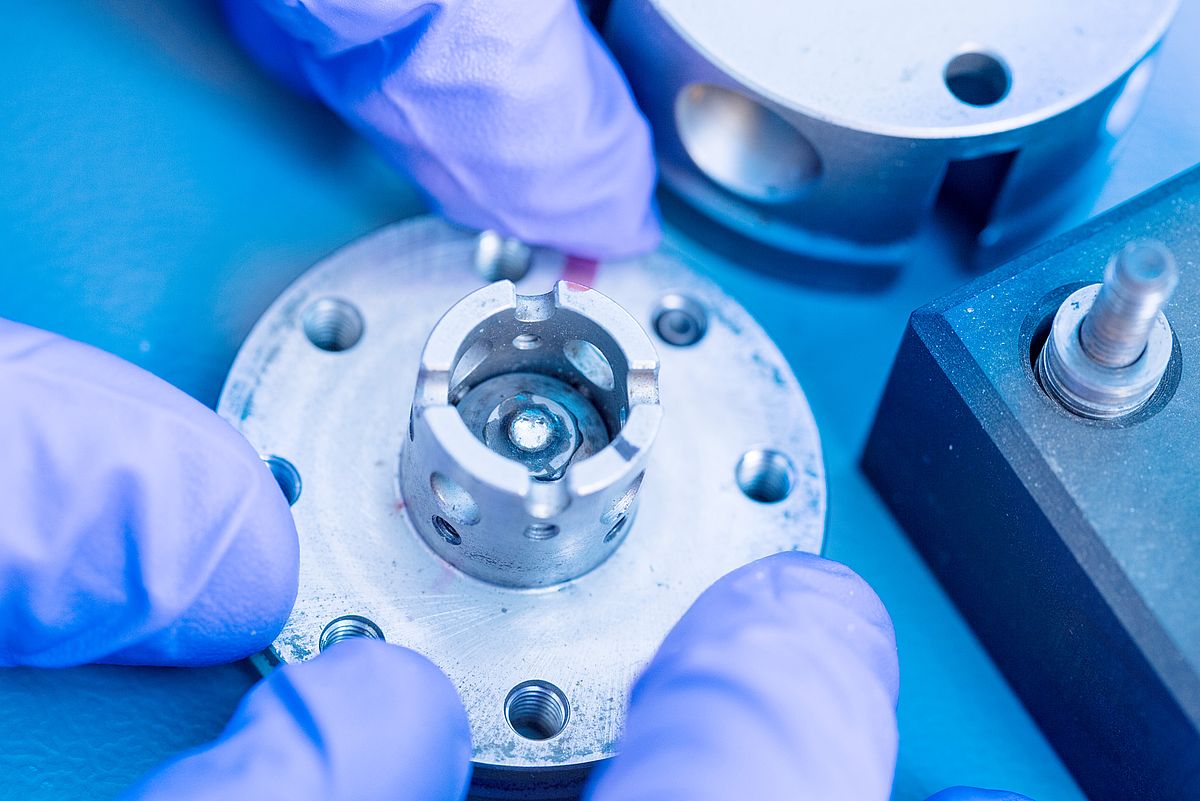Ultrasensitive virus diagnostics with nanodiamonds and quantum optics: Ultrasens-Vir
Respiratory infections are a major burden on the global healthcare system, most recently seen highlighted by the COVID-19 pandemic. However, while SARS-CoV-2 is the most infamous causative agent in recent history, it is far from the only viral pathogen infecting the respiratory tract. Viruses like influenza, respiratory syncytial viruses, rhinoviruses and many others also spread through droplets and early diagnosis is essential for prevention of spread and successful treatment. While lateral-flow devices have become more widespread over the last years due to their low cost and applicability at points of care, they lack sensitivity compared to the more time and labor-intensive PCR. With the goal to develop a new techology for detection of viral pathogens that is ultrasensitive but also rapid and inexpensive, the Institute of Quantum Optics, the Institute of Molecular Virology and the MPI for polymer research have now initiated a new collaborative research project funded by the Carl Zeiss Foundation.
Utilizing virus-specific probes and fluorescent nanodiamonds as sensors, the project seeks to develop point-of-care tests which will be able to detect a variety of different viruses without the need for amplification of genetic material. This is made possible by the unique optical properties of fluorescent nanodiamonds, which enable practically background-free detection of a single nanodiamond by magnetic field-modulated fluorescence – coupled to selectively designed virus-specific probes, this will enable sensing of single viral genomes. With different color centers and defined positions per target on a single test strip, the project aims to enable detection of many different viruse simultaneously, such as SARS-CoV-2, Influenza A and B, RSV and common cold coronaviruses.
For this exciting new project, the Carl-Zeiss foundation granted the researchers funding of five million Euro over the next seven years. The preparation of the nanodiamond sensor will be handled by the group of Prof. Dr. Tanja Weil, Managing Director of the Max Planck Institute for Polymer Research, while sensing of the nanodiamonds is developed by the group of Prof. Dr. Fedor Jelezko, Director of the Institute of Quantum Optics at Ulm University. Finally, development and testing of the viral probes will be handled by the Institute of Molecular Virology, co-headed by Prof. Dr Jan Münch. For long term application of this prospective new technology the Centre for Research and Development of Robert Bosch GmbH has agreed to develop the final test devices.
Press release of Ulm University
Project description on the Carl Zeiss website


